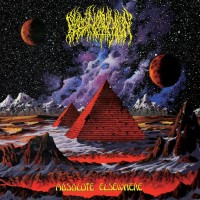Averse Sefira - Biography
Logo
1996-2008
Biography
Averse Sefira was formed in 1996 by guitarist and vocalist Sanguine Mapsama and bassist Wrath Sathariel Diabolus. Their demo, "Blasphomet Sin Abset", was released later that year. It featured a drum machine in lieu of a live drummer. Three years later, in 1999, their first full-length album, which was entitled Homecomings March, was released on Arrogare records, their own label which was created specifically for the purpose of releasing that album. Again, the band had to make use of a drum machine instead of a real drummer. It was in some ways the band's most strictly black metal release, the album lacked the chaotic death-metal influence of their later works, and was almost entirely a melodic mid-paced affair, in a style similar to Mayhem's "De Mysteriis Dom Sathanas" or early Gorgoroth. Homecomings March is also noted for its ambient interludes, known as "aversions", in between each track, which were composed by "Lady of the Evening Faces". Some fans consider these to be one of the album's strengths, while others consider the material to be intrusive. A remastered version of the album was released in 2003, with the interludes as separate tracks.
2001 had the band releasing a second album, "Battle's Clarion". For this album, the band, for the first time, had a live drummer, The Carcass, who was previously a member of Texas death metal band Death of Millions, and was, at one point, a touring drummer for Incantation. The music on this album took on a profound death metal influence, at times reminiscent of early Deicide or Morbid Angel, but was still easily identifiable as black metal- the imagery and emotions evoked by the songs pertained to epic battle, rather than the savagery and chaotic lawlessness of death metal. The aversions were shorter and more integrated into the actual songs on this album, an improvement which fans greatly appreciated.
After Battle's Clarion, the band toured internationally for a few years intermittently, both with well-known bands such as Dark Funeral and underground acts such as Antaeus and Watain. The band quickly gained a reputation for putting on a fierce live show and gained followings in Europe and South America, particularly in Brazil.
Four years after Battle's Clarion, in 2005, the band returned to the studio to record their third full-length album, Tetragrammatical Astygmata. For the first time, the band had a powerful production, provided by Necromorbus Studio; the sound was powerful and, while far from sterile, incredibly clear. This album saw the band continuing both in the more sonorous direction employed on Homecomings March and the chaotic direction first seen on Battle's Clarion; extremely chaotic moments were tempered with sonorous riffs that lent the band both an impressive range of dynamics and space for contemplation amongst a chaotic, feral setting. A newly found sense of harmonics, similar to Immortal's Pure Holocaust, aided in the creation of the band's sound as well as connecting it to the contemplative moments and consequently allowing them to reflect on the chaos, rather than seeming like disjointed and irrelevant sentimental moments in otherwise raging pieces. Interludes on this album were more limited than on any prior work, occasionally making a brief appearance to connect two songs.
Advent Parallax was issued on February 25th by Candlelight Records. And again it was powerfully produced by Tore Stjerna (Necromorbus).
2001 had the band releasing a second album, "Battle's Clarion". For this album, the band, for the first time, had a live drummer, The Carcass, who was previously a member of Texas death metal band Death of Millions, and was, at one point, a touring drummer for Incantation. The music on this album took on a profound death metal influence, at times reminiscent of early Deicide or Morbid Angel, but was still easily identifiable as black metal- the imagery and emotions evoked by the songs pertained to epic battle, rather than the savagery and chaotic lawlessness of death metal. The aversions were shorter and more integrated into the actual songs on this album, an improvement which fans greatly appreciated.
After Battle's Clarion, the band toured internationally for a few years intermittently, both with well-known bands such as Dark Funeral and underground acts such as Antaeus and Watain. The band quickly gained a reputation for putting on a fierce live show and gained followings in Europe and South America, particularly in Brazil.
Four years after Battle's Clarion, in 2005, the band returned to the studio to record their third full-length album, Tetragrammatical Astygmata. For the first time, the band had a powerful production, provided by Necromorbus Studio; the sound was powerful and, while far from sterile, incredibly clear. This album saw the band continuing both in the more sonorous direction employed on Homecomings March and the chaotic direction first seen on Battle's Clarion; extremely chaotic moments were tempered with sonorous riffs that lent the band both an impressive range of dynamics and space for contemplation amongst a chaotic, feral setting. A newly found sense of harmonics, similar to Immortal's Pure Holocaust, aided in the creation of the band's sound as well as connecting it to the contemplative moments and consequently allowing them to reflect on the chaos, rather than seeming like disjointed and irrelevant sentimental moments in otherwise raging pieces. Interludes on this album were more limited than on any prior work, occasionally making a brief appearance to connect two songs.
Advent Parallax was issued on February 25th by Candlelight Records. And again it was powerfully produced by Tore Stjerna (Necromorbus).




